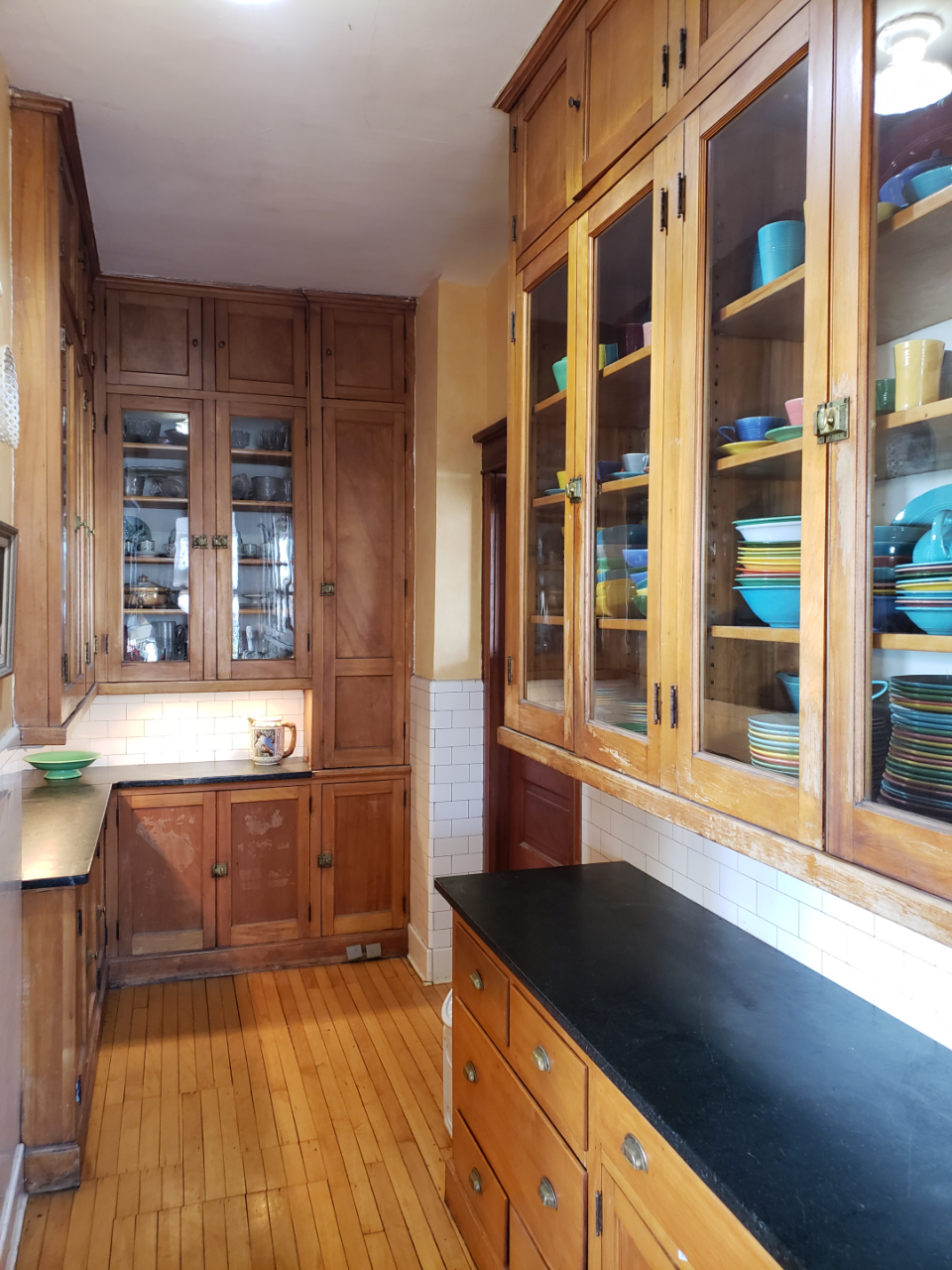
I’ve never met Harry Forehead but I mix cocktails in his pantry. Harry was born in England and he was an accomplished cricket player. In fact, he captained a cricket team that played a match in Miller Park on Labor Day 1911. No doubt he also played cricket at Field Club when it still was a cricket club.
Harry worked as a butler to The Beebes, who lived in my home for decades. I’m proud to say that his pantry remains almost the same as it was in Harry Forehead’s time. A brass mouthpiece to the home’s 1901 intercom still juts from the wall, the other end leading to the second-floor hallway. The southern yellow pine cabinets all remain, down to the wavy glass on the wall cabinet doors. Only the countertops have changed. The original countertops were also pine but age, wear and water splashing from the sink left the wood cracked and warped. Wood counters were prevalent in butler’s pantries a century ago so plates could be set on them silently, as not to disturb diners in the dining room. I broke my rule of replicating what is original if repair is impossible since new wood countertops would deteriorate like the original ones did. Given the quality of today’s pine compared to what was available 120 years ago, it would deteriorate far faster. I replaced the warped countertops with soapstone since soapstone was a material used for this purpose when my home was built.
Butler’s pantries in the 1800’s and early 1900’s operated as a transition space between the kitchen and the dining room. A swinging door buffered sounds and smells from the kitchen to the butler’s pantry and another swinging door further buffered the pantry from dining room. Servants may need to be seen but they certainty were not to be heard.
Years ago, after the annual Memorial Day homage to Anna Wilson at Prospect Hill cemetery, I was wandering around and, just by happenstance, I came across Harry’s grave. When I returned home I mixed a Pimm’s #1 Cup in his pantry in honor of Harry.


 Facebook
Facebook
 X
X
 Pinterest
Pinterest
 Copy Link
Copy Link


